In their own words:
Trinity at 75
July 15, 2020 • Selection and design by Thomas Gaulkin
July 15, 2020
Selection and design by Thomas Gaulkin
On July 16, 1945 the first nuclear bomb exploded near Alamogordo, New Mexico. The Trinity test marked the culmination of nearly four years of secret research led by an unprecedented collaboration of the world's top scientists and the US military. It also guaranteed that the uranium gun-type weapon dropped on Hiroshima could be followed by another that used the plutonium implosion design tested at the Trinity Site. In essence, Trinity was a test-of-concept for the bomb that leveled Nagasaki.
The history of the Manhattan Project and the birth of the bomb have been examined and reexamined countless times over the past seven decades—as have the threats they posed to humanity.Though nearly all now are dead, many scientists, soldiers, and family members who attended the birth of the bomb documented their first-hand experiences in the pages of the Bulletin in a way that lives on, providing an exceptional and vivid glimpse of their struggles to achieve victory in war and science.
Read together, the eyewitness excerpts below offer a new retelling of the Trinity test, woven entirely from words that more than a dozen of the project's protagonists first published in the Bulletin.
On July 16, 1945 the first nuclear bomb exploded near Alamogordo, New Mexico. The Trinity test marked the culmination of nearly four years of secret research led by an unprecedented collaboration of the world's top scientists and the US military. It also guaranteed that the uranium gun-type weapon dropped on Hiroshima could be followed by another that used the plutonium implosion design tested at the Trinity Site. In essence, Trinity was a test-of-concept for the bomb that leveled Nagasaki.
The history of the Manhattan Project and the birth of the bomb have been examined and reexamined countless times over the past seven
decades—as have the threats they posed to humanity.Though nearly all now are dead, many scientists, soldiers, and family members who attended the birth of the bomb documented their first-hand experiences in the pages of the Bulletin in a way that lives on, providing an exceptional and vivid glimpse of their struggles to achieve victory in war and science.
Read together, the eyewitness excerpts below offer a new retelling of the Trinity test, woven entirely from words that more than a dozen of the project's protagonists first published in the Bulletin.
Suitable ground: Alamogordo
Lt. Gen. Leslie R. Groves
Groves was the Army administrative officer in charge of the entire wartime Manhattan Project. Scientists at Los Alamos loathed his policy of "compartmentalization," which aimed to isolate scientists to preserve secrecy.
In the early days, we believed that a gun-type bomb would be entirely satisfactory for both uranium-235 and for plutonium, and we did not feel that any full-scale test would be necessary. Later, when we learned that the gun-type would not be suitable for plutonium, we began to realize that we might find it advisable to test the implosion-type bomb. ... As soon as a full-scale test—and it had to be full-scale—became likely, we began the search for a suitable testing ground.
Kenneth T. Bainbridge
Bainbridge, a Harvard University physicist who worked on the development of radar before joining the Manhattan Project, was in charge of the Trinity test shot.
The basic requirements for the Trinity test site were a flat area to facilitate measurements, a remote but accessible region which for security reasons could not easily be associated with Los Alamos, and an area which could be cleared of all inhabitants months before the test date. The area had to be remote from populated areas so that people could be evacuated in the event of a low-order detonation, which would distribute poisonous plutonium, or a high-level explosion, which would be accompanied by dangerous radioactive fall-out.
George B. Kistiakowsky
Kistiakowsky, a physical chemist from Harvard, led the X (explosives) division at Los Alamos, which developed the implosion lenses required to uniformly compress the bomb's plutonium core. He later served as a science adviser to presidents Eisenhower and Kennedy.
The Alamogordo site chosen for the Trinity test is in the White Sands military reservation, about 200 miles south of Los Alamos, in the middle of an arid, sandy desert appropriately called Jornada del Muerto by the seventeenth-century Spaniards. Kenneth Bainbridge was in charge of selecting, and then developing, the test site. His organization grew large because, while confidence in the implosion process was growing slowly, ever more experiments were being invented and designed to observe the progress and consequences of the nuclear reaction or its absence, and the causes thereof.
Bainbridge had his field headquarters at an abandoned ranch, really just a group of crude shacks, about ten miles from the Trinity ground zero. To these he added more buildings, almost equally uncomfortable, since General Groves would not allow any "luxuries," as he defined them. Life at the Trinity site was primitive and there was grumbling by those who had to spend weeks on end there and who, because of the strictures of secrecy, could not visit nearby towns for relaxation. Nonetheless, by a near miracle of hard work, an elaborate field-test installation was created in just a few months' time.
Emilio Segrè
Italian physicist and winner of the 1959 Nobel Prize in Physics. Segrè headed the radioactivity research group at Los Alamos, and was responsible for measuring the gamma radiation from the Trinity blast.
In July many of the physicists moved to the desert site to prepare for the final tests. The tests consisted in the explosion of an atomic bomb containing Pu239, located at the top of a steel tower, and in the measurement of the energy released under various forms: light, gamma rays, shock wave, and so on.
We established ourselves in barracks, under paramilitary discipline, and Fermi participated in most of the work. He and [Herbert L.] Anderson also had a special post-explosion project, which was to collect some of the sand and rocks immediately under the tower that supported the bomb and measure the fission products found in the ground. The desert was extremely hot during the day but relatively cool at night, and occasionally there were heavy thunderstorms. In the strange surroundings—scorpions, and gila monsters abounded, and the plants, desert adapted, looked unfamiliar—the physicists and their helpers ran miles of cables, calibrated innumerable pieces of apparatus, developed routine procedures, and then tested and retested them, always with the thought that there could be no repetition in case of failure, a most unusual condition for an experimental physicist. We worked very hard—best in the early morning and with less vigor as the temperature rose and the light became blinding. In the evening, very tired, we returned to our cots in the barracks. I had brought a French novel to read, a practice I had formed years before as a soldier, and I found refreshment in diverting my thoughts from the present situation to an imaginary world.
Family Secret Science
I would like to speak for my father [Nobel Prize-winning physicist Enrico Fermi], whom I knew as a man of scrupulous honesty. He played by the rules, and the rules were that anything to do with the Manhattan Project was not discussed outside the circle of physicists who were involved. He did not even bend the rules, as others did, to talk to his wife. In fact, I believe that my mother, Laura, was somewhat hurt by his reticence with her. At the time of the Trinity test, at least some of the married scientists were unable to resist telling their wives to go outside and watch for something. However, my father went to Alamogordo without dropping a hint. The mushroom cloud was visible from Los Alamos, but the Fermi household slept through it.
Nella Fermi Weiner
Artist and educator, one of Enrico Fermi's two children who lived and went to school in Los Alamos.
The word "Alamogordo" sounds alien to me, as it must sound to all persons who were in Los Alamos toward the end of the war. The big test was then an also-big secret, and Alamogordo, where it was to take place, was never mentioned. We heard only about "Trinity."
"What's Trinity?" I asked my boss, young Dr. Louis Hempelman, the first time he uttered the word in my presence. "Ask your husband," he replied. I should have expected that answer. As a "blue-badge" worker, I couldn't be told any secrets, and "white-badge" Hempelman, though friendly and tolerant of part-time workers like me, stuck by the rules. Every time I inquired about the meaning of words such as "tubealloy," or "49," or any others in the lingo that had sprung up within the fence of the technical area, I drew a blank look from Hempelman and an "Ask your husband."
But Fermi was even more tightlipped than most "white badges" where secrecy was concerned, and for myself, enjoying my first full vacation from physics since marriage, I avoided anything that might open a flow of scientific explanations. In that spring of 1945 I even shunned the wondrous female grapevine, as Lansing Lamont dubbed it in his "Day of Trinity," which on the night of the test brought a few snoopy wives to the top of a hill, somewhere between Los Alamos and Trinity. So I received no enlightenment, and my only recollection of Alamogordo is Fermi's appearance when he returned from Trinity: He seemed shrunken and aged, made of old parchment, so entirely dried out and browned was he by the desert sun and exhausted by the ordeal.
Laura Fermi
While at Los Alamos Laura Fermi joined other wives of scientists like Kitty Oppenheimer working in the health group to take blood counts. She wrote several books about science and life with Fermi's work, including the Manhattan Project.
Testing the Test
Emilio Segrè
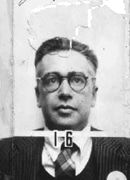
The problems involved in the Trinity test ranged from hydrodynamics to nuclear physics, from optics to thermodynamics, from geophysics to nuclear chemistry. Often they were closely interrelated, and to solve one it was necessary to understand all the others. Even though the purpose was grim and terrifying, it was one of the greatest physics experiments of all time. At the time of the test [Fermi] was one of the very few persons (or perhaps the only one) who understood all the technical ramifications of the activities at Alamogordo.
Kenneth T. Bainbridge
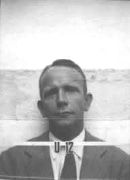
There were really three classes of experiments scheduled. One set of tests was prepared to obtain measurements on blast, optical, and nuclear effects and characteristics. Another set, for which Robert R. Wilson, Bruno Rossi, Kenneth Greisen, Ernest W. Titterton and others were making preparations, was for a more detailed study of the implosion process and a check on the detonators, which would be of great value if the implosion should be imperfect. The measurement on the simultaneity of detonation of the explosive lenses was my least favorite experiment, as it meant that the test bomb was more complicated than the final "production" units, and that the chance of irregular predetonation by pick-up from lightning or any other factor was increased.
A third category was an experiment of great significance for the proposed explosion and for monitoring future atmospheric nuclear explosions anywhere. Herbert L. Anderson had worked it out.
Herbert L. Anderson
Anderson was Fermi's colleague at the University of Chicago. He helped build the first atomic pile, CP-1, that produced the first self-sustaining chain reaction at the University of Chicago in 1942. In addition to his work on fissile materials at Los Alamos, Anderson consulted on the Hanford B reactor that produced the plutonium used at Trinity.
"Why not," I argued, "use a radiochemical method to measure the efficiency?" When the bomb exploded the fission products from the reaction as well as the unburned plutonium would be deposited on the ground. A comparison of the characteristic radiations of each, coupled with a knowledge of the branching ratios of the fission products would give directly the fraction of the plutonium burned. ... My proposal was accepted, and I immediately went to work on it. [...] Later the principle of our experiment became the basis of the method for the long range detection of nuclear explosions, using air samples instead of those from the ground.
The chamber was, of course, instantly destroyed by the explosion and so was most of the cable; but the signal, running at the speed of light, stayed ahead and was safely recorded.
— Otto Frisch
Kenneth T. Bainbridge
Herb Anderson's experiment required that one way or another samples of the earth in the crater would be collected as soon as possible after the bomb explosion. One hope had been to use a semirigid dirigible, or a blimp, to lower a grab bucket to pick up samples as a backup for the rockets. Unfortunately those available would not behave very well at the high altitude and desert temperature conditions with their bases so far away. The few helicopters available at that time didn't have enough operating leeway to do much beyond support the pilot. We also had in mind a blimp or helicopter as a rescue vehicle if we used a shielded tank to recover samples of sand. If the tank should get stuck in highly radioactive sand, it would be well to get the driver and scientist-passenger out of there in a hurry. As the aerial rescue methods were canceled out, preparations were made to shield two tanks with lead, one for the reconnaissance and one held in reserve as a rescue vehicle. Unfortunately on July 16, only one tank was operative.
Otto R. Frisch
Before the Manhattan Project began, UK-based physicist Frisch prepared the first technical outline for the design of a nuclear bomb. At Los Alamos he led the Critical Assemblies Group which determined the quantities of fissile material required to create critical mass for the explosion.
When it came to the real test performed in the desert of Alamogordo, many of us went out some weeks beforehand to set up experiments trying to learn as much as we could from the explosion. Perhaps the most exciting one was arranged by Bob Wilson, who installed a fast ionization chamber very close to the bomb, which was connected by a long coaxial cable to his well-protected recording equipment that was far enough away to be safe in order to record the growth of the reaction during the first microsecond. The chamber was, of course, instantly destroyed by the explosion and so was most of the cable; but the signal, running at the speed of light, stayed ahead and was safely recorded. My own experiment failed. I had tried to get a pin-hole photograph with x-rays of the exploding bomb, but my shielding was not good enough and all my film was blackened.
J. H. Manley
Manley was one of Oppenheimer's chief aides and head of the deuterium group. He worked on the Manhattan Project from its beginnings in the Metallurgical Lab at the University of Chicago through the Trinity test, and remained at Los Alamos for most of his post-war career.
My group like others in the nuclear physics division, ceased laboratory experiments in our subject and started preparation for the ultimate experiment of the Trinity Test. Our assigned tasks were to obtain data on blast and earth shock. We turned our attention to procurement, testing, and calibration of instruments for this purpose, and the Cockroft-Walton building was soon reverberating from the bangs of our shock tube. We had to be ready with some of our field equipment for the 100 ton TNT shot on May 7, 1945 and with the balance for the main event, July 16.
My recollections of the few months prior to the latter date are a jumble of excitement, long hours, fatigue. Procurement and services were major problems. Everyone needed shop work and only good management and a priority system kept frustrations to a minimum. No surveyors were available to lay out the stations for my group's measurements, so I scrounged a transit and took on that field responsibility. Anyone who has run a line in a desert in May and June with sightings dancing in the heat will appreciate my feeling of satisfaction when triangles closed within expected error! This activity culminated in an eye infection which was miserable, but through which I could still see the blinding flash at time zero, ground zero, 10,000 yards away from the west bunker that was my command.
the gadget and civilization
[The uranium gun-type bomb] was the first time in history since the Trojan Horse that a new weapon was to be used without prior testing.
— Leslie R. Groves
Something like a year after Los Alamos had started, I called a meeting in the cyclotron laboratory (Building X) which was under my direction. I remember placing notices around Los Alamos that announced a seminar sententiously entitled "The Impact of the Gadget on Civilization." I am hazy now as to who came or just what was said, but my impression is that a large part of the "intellectual contingent" turned out, including [Los Alamos Laboratory director J. Robert] Oppenheimer. Our rather small meeting room was completely filled. We were by then, I think, aware that the Germans probably would not be able to make a bomb, and that the Allies were almost certainly going to win the war. ... At that time, we were perhaps overly obsessed by what we regarded as the evil of military security. We feared that the military would keep nuclear energy a secret were the bomb not revealed by an actual explosion. It is significant that no one at that meeting in Building X even raised the possibility that what we were doing might be morally wrong. No one suggested that we should pack our bags and leave. Instead, with missionary zeal, we resumed our work.
Robert R. Wilson
Wilson was the youngest of the research leaders at Los Alamos, first as head of the cyclotron group and later the entire research division. He went on to become founding director of Fermilab, and helped launch the Federation of American Scientists and its initial focus on civilian control of nuclear energy.
From July 16 to August 6 was a very short time for the observers of the Trinity test and the others who heard any details about it—comparatively few people and mostly still greatly occupied with technical work—to re-examine the question of a demonstration.
David H. Frisch
As a graduate student while at Los Alamos, Frisch helped confirm that fast neutrons were sufficient to trigger a chain reaction. He became a professor of physics at MIT and was active in the disarmament movement.
Perhaps events were moving just too incredibly fast. We were at the climax of the project—just on the verge of exploding the test bomb in the desert. Every faculty, every thought, every effort was directed toward making that a success. I think that to have asked us to pull back at that moment would have been as unrealistic and unfair as it would be to ask a pugilist to sense intellectually the exact moment his opponent has weakened to the point where eventually he will lose, and then to have the responsibility of stopping the fight just at that point. Things and events were happening on a scale of weeks: the death of Roosevelt, the fall of Germany, the 100-ton TNT test of May 7, the bomb test of July 16, each seemed to follow on the heels of the other. A person cannot react that fast. Then too, there was an absolutely Faustian fascination about whether the bomb would really work.
R. R. Wilson
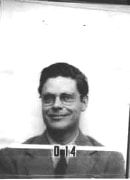
ready... set...
Boyce McDaniel
McDaniel was a member of Wilson's cyclotron group, but had a hands-on role during the preparations for the Trinity shot, including as the last person to climb the Point Zero tower—in a lightning storm—before the detonation. He had a long career as a particle physicist at Cornell University.
The plutonium core for the bomb had been sent down by a guarded caravan. I remember Phil Morrison rode down to the site with us. He was carrying the initiator with him. It was a spherical shell of beryllium containing polonium, which was to be mixed on implosion to produce the triggering neutrons. In addition to the true initiator, there was a simulated initiator of the same size which was used to mock up the assembly program. Morrison amused us with a version of the slight of hand game, 'pea under the shell,' where he would confuse us by exchanging the real ball with the simulated initiator. To one who did not understand the secret, it was a somewhat terrifying game, since we all realized how much depended on being certain that the correct initiator was used in the bomb assembly. The secret, of course, was that the real ball, containing the polonium, was actually hot to the touch because of the high rate of emission of alpha particles with their associated energy release. The simulation device, on the other hand, was quite cool to the touch.
Finally, the moment came to carry the plutonium core, with its initiator, from our temporary assembly site in an abandoned farm house to the firing tower. With the proper initiator safely stowed away inside the core, and the core mounted in a cylindrical plug of uranium, we gingerly drove to the foot of the tower. There, in the center, under the 100 foot tower, we found a tent set up with the partially assembled implosion device inside. It was in the shape of a five foot diameter sphere, and was made up of explosive lens sectors shaped like watermelon plugs, all pointed toward the center.
Val L. Fitch
Fitch was present at the first test as a member of a military unit known as the Special Engineer Detachment, a group of army enlisted men extracted from regular army units to serve largely in technician capacities in the Manhattan Project. He went on to win the Nobel Prize in physics in 1980.
We hooked our coaxial cables into the bomb at the top of the tower on the Friday before the test. We had the usual difficulties guaranteeing continuity in the cables leading to the equipment in the bunker one-half mile west. After several trips up and down the 100 foot tower we finally had our gear ready to go. Then Saturday morning a new check revealed the coaxial cable circuit between the tower and the bunker to be open. It developed that the ditch in which the cables were laid had been filled in by a bulldozer in the meantime. Unfortunately, there had not been enough slack in the cables and the overburden of earth put too much tension on them.
We spent Saturday, July 14, 1945, in a broiling desert sun digging in the sand, finding the faults in the half mile of cable, and correcting them. By nightfall everything was again intact, all circuits were working.
Kenneth T. Bainbridge
The bomb was now on the tower and the Base Camp was bulging so that many people who had worked hard at Los Alamos and had every right to witness the test were required to go to a location at Compagna Hills about 20 miles away from Point Zero. David Dow was in charge of that site and had a shortwave radio to hear the final countdown at the frequency for ground-to-B29 communication... The frequency was meant to be different from that of any licensed station. Unfortunately, security had allotted us the Voice of America's frequency. Our FM radios, which several guard stations, the Base Camp, and many jeeps and cars were equipped with for local communication, had been assigned the frequency of the railroad freight yard in San Antonio, Texas. Though far away, we could hear them shifting freight cars by number and presumed that they could hear us. The Socorro Airport listened in too.
I had been in the test area nearly all day. Back at the Base I was furious to hear of discussions of the possibility that the atmosphere might be detonated. This possibility had been discussed at Los Alamos and had been quashed by intensive studies of all possibilities by Hans Bethe and others. It was thoughtless bravado to bring up the subject as a table and barracks topic before soldiers unacquainted with nuclear physics and with the results of Bethe's studies.
George B. Kistiakowsky
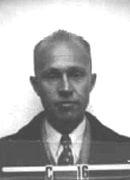
Sunday night, unexpectedly, I spent sitting part way up the bomb tower while Bainbridge and two others were on the ground just below me. The test scheduled for Sunday evening had to be delayed due to bad weather and General Groves insisted that there was danger of sabotage to the bomb, since the military guards had been withdrawn to assure their safety. So our group went to watch it, the commander of our Military Police clutching a submachine gun, Bainbridge on the phone to the control bunker, and I occasionally sweeping the countryside with a searchlight.
Lt. Gen. Leslie R. Groves

Safety was a serious problem, both the safety of our own people and those in the immediate and general areas. We did not know just how big the explosion would be or what its effects would be, and we had to guess at all of the possibilities and do our best to see that each one was adequately taken care of.
As to our own personnel, we had no doubt but that the control dug-out some five miles from the site of the tower would provide ample protection for the group and equipment to be stationed there. We were also certain that it would be safe to be out in the open at the base camp, about 10 miles distant, except for possible eyesight damage. This we felt was not too great a hazard, provided all exposed persons followed the procedure we prescribed of not looking at the expected fireball except through smoked glasses. The requirement later adopted - that observers at the base camp lie down with their heads away from the explosion and their faces towards the ground, while covering their eyes with their hands- was an extra precaution. It was thought to be desirable just in case the explosive force should turn out to be much greater than we anticipated. [...]
[L]ike too many things in the Manhattan Project—we were dealing with unknowns outside the realm of man's experience, and we simply had to try to imagine everything that might happen.
Emilio Segrè
Everything was ready for the Trinity test on July 15. On the evening of that day a tremendous thundershower fell on the desert. I had retired, but my attention was attracted by an unbelievable noise whose nature escaped me completely. As the noise persisted, Sam Allison and I went out with a flashlight and, much to our surprise, found hundreds of frogs in the act of making love in a big hole that had filled with water. In the late evening we went to sleep, still wondering if the weather would prevent the test which for many of us was the culmination of years of grueling work and on whose result tremendous issues depended.
The bomb assembly was raised to the top of the tower using the winch. This was a lovely winch costing $20,000, and I cringed when I realized it would be vaporized in the test.
— Boyce McDaniel
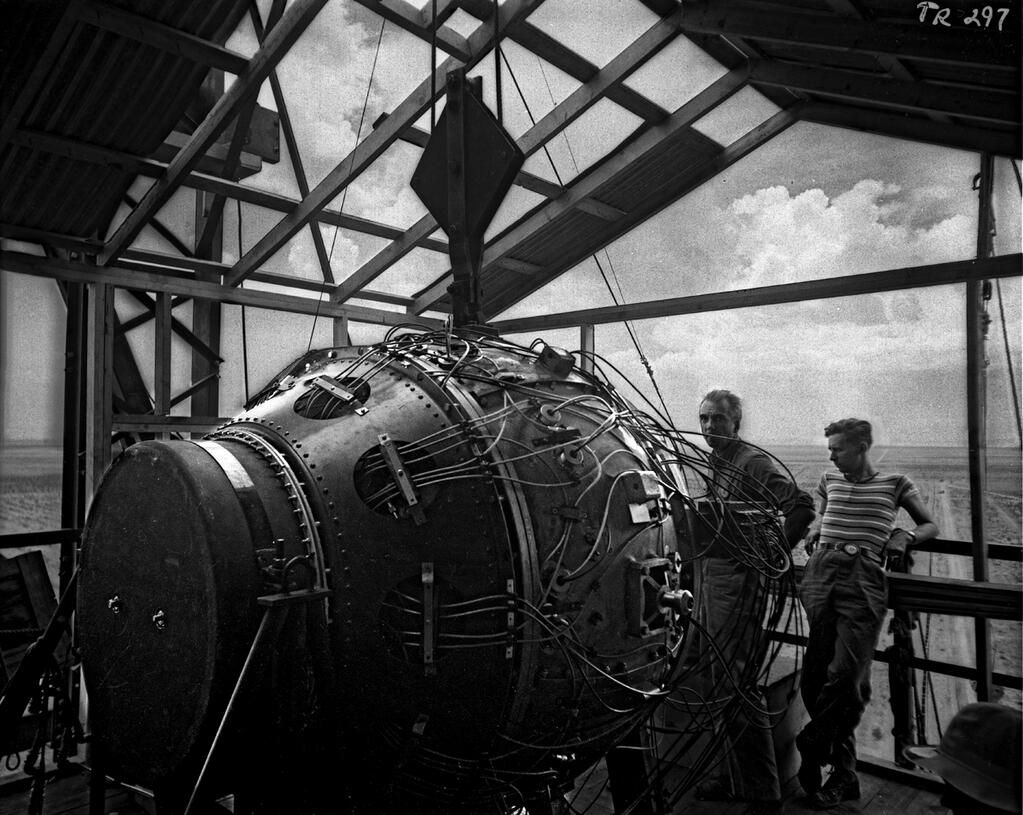
My personal nightmare was knowing that if the bomb didn't go off or hangfired, I, as head of the test, would have to go to the tower first and seek to find out what had gone wrong.
— Kenneth Bainbridge
T = 0
I remember thinking, "This is a very dramatic moment. I must concentrate on it so that I can remember it."
— Boyce McDaniel
The first possible time for the detonation of the real bomb had been set for 2 a.m. July 16, and the Arming Party was scheduled to arrive at Point Zero-the tower supporting the bomb-before 11 p.m. July 15. At that hour, Don Hornig would connect the cables to the bomb and detach the detonating unit used in rehearsals. [...]
Sporadic rain was a disturbing actor. […] At midnight our earliest possible 2 a.m. shot had to be canceled. Soon everyone was told to get out of the test area as we might shoot at 4 a.m. Then zero time set for 4 a.m. was washed out. [...]
We had none of the lightning reported by those at the Base Camp about 16,000 yard away or at S 10,000, but it made interesting conversation as many of the wires from N,S,W 10,000 ended at the tower. Williams insulated me from whatever the tensions were at S 10,000. Finally, just before 4:45 a.m., Hubbard gave me a complete weather report and a prediction that at 5:30 a.m. the weather at Point Zero would be possible but not ideal. We would have preferred no inversion layer at 17,000 feet but not at the expense of waiting over half a day. I called Oppenheimer and General Farrell to get their agreement that 5:30 a.m. would be T = 0.
Kenneth T. Bainbridge
Eventually those in authority, the high brass, began to appear. My reaction to their presence was mixed, pleased by their appearance on the scene but slightly resentful that they appeared only at the last moment. They really hadn't bitten the desert sand. […]
Here I was, at the focal point of a momentous occasion, by circumstance knowing most of what was going on, seeing all, hearing all, measuring the well-known people who had just arrived on the scene. Still, cloaked in the anonymity of an enlisted man's fatigue uniform, I was largely ignored by these same people. Somehow the uncertainty principle was being violated. My presence could not have affected the visiting dignitaries less.
Val L. Fitch
To my distress, I found an air of excitement in the base camp instead of the calmness essential to sound decision-making. There were just too many experts giving advice to Oppenheimer about what he should do with the majority of them advising postponement. And, what was worse, none of these were experts in the area that mattered. Was it going to rain and how much? When, and for how long? […]
We decided to go up to the control dugout. Here, there was an air of excitement but a minimum of advice and opinions. Everyone had work to do.
Lt. Gen. Leslie R. Groves
Returning to the base of the tower, [I] threw the special arming switch... Until this switch was closed the bomb could not be detonated from S 10,000. The final task was to switch on a string of lights on the ground which were to serve as an "aiming point" for a B-29 practice bombing run. The Air Force wanted to know what the blast effects would be like on a plane 30,000 feet up and some miles away, simulating a bomb drop and scramble from the target area. The plane, dodging thunderheads, was not in proper position, but was 15 or 20 miles away when the bomb went off.
After turning on the lights, I returned to my car and drove to S 10,000, arriving about 5:00a.m. [...]
I unlocked the master switches and McKibben started the timing sequence at -20 minutes, 5:09:45 a.m. At -45 seconds a more precise automatic timer took over. At the final seconds another circuit, designed by Titterton, sent out electronically timed signals for the still more precise pulses needed by many special instruments.
At -30 seconds I left the S 10,000 shelter and found Bill Elmore 20 yards away, who let me use a section of his sheet of foam rubber to lie down on. We all had welder's goggles and I looked in the direction of Little Burro Peak which was to the right and behind me.
Kenneth T. Bainbridge
According to contemporary accounts "a simple G.l." stood with his hand on the safety switch, ready to stop the sequence. It was really Hornig, but the khakis made us all look alike. The bunker was crowded, although Oppenheimer made the visiting big shots stay back at the base camp where they were all lying in shallow trenches. I had no further duties, so before the count came to zero I went outside and to the top of the bunker, put on dark glasses and turned away from the tower so as not to be blinded. Although I was confident that implosion would work, I didn't think anything could happen to me because I was sure that the predictions of the theoretical physicists at Los Alamos greatly exaggerated the violence of the resulting nuclear reaction. I expected an explosion perhaps like that of the 100-ton charge of TNT that we had fired at the Trinity site a few weeks earlier to check out some of the site equipment. ... I lost my bet in a large pool that was organized before Trinity.
George B. Kistiakowsky
Finally at t-10 minutes, all of us at the base site crouched on the ground behind an earthen barricade watching the light glowing on top of the tower. The first gray of dawn was making its way through the clouds. I remember thinking, "This is a very dramatic moment. I must concentrate on it so that I can remember it." I looked around me at the leaders of the program and at my friends. I remember especially I. I. Rabi, Fermi, and Bacher, each staring intently into the darkness. Then came the last minute countdown with the switch to automatic time out. Finally, the brilliant flash of an ever growing sphere was followed by the billowing flame of an orange ball rising above the plain.
Boyce McDaniel
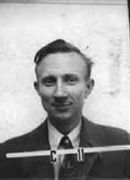
The bomb detonated at T = 0 = 5:29:45 a.m. I felt the heat on the back of my neck, disturbingly warm. Much more light was emitted by the bomb than predicted, the only important prediction which was off by a good factor. When the reflected flare died down, I looked at Oscuro Peak which was nearer Zero. When the reflected light diminished there I looked directly at the ball of fire through the goggles. Finally I could remove the goggles and watch the ball of fire rise rapidly. It was surrounded by a huge cloud of transparent purplish air produced in part by the radiations from the bomb and its fission products. No one who saw it could forget it, a foul and awesome display.
I had a feeling of exhilaration that the "gadget" had gone off properly, followed by one of deep relief. I wouldn't have to go to the tower to see what had gone wrong.
Kenneth T. Bainbridge
The most striking impression was that of an overwhelmingly bright light. I had seen under similar conditions the explosion of a large amount—100 tons—of normal explosives in the April test, and I was flabbergasted by the new spectacle. We saw the whole sky flash with unbelievable brightness in spite of the very dark glasses we wore. Our eyes were accommodated to darkness, and thus even if the sudden light had been only normal daylight it would have appeared to us much brighter than usual, but we know from measurements that the flash of the bomb was many times brighter than the sun. In a fraction of a second, at our distance, one received enough light to produce a sunburn. I was near Fermi at the time of the explosion, but I do not remember what we said, if anything. [...]
Then, in the first light of dawn, we observed the development of the first mushroom of dust and vapor from a nuclear explosion.
Emilio Segrè
As I turned to the tower huge billowing clouds of dust spread from the base of the expanding fireball that rapidly became yellow, then red and finally became a mushroom cloud which ascended into the stratosphere. Meanwhile almost the whole sky lit with an intense violet glow. Quite incredible, that spectacle, so I forgot about the blast wave that hit and shook me quite a few seconds later. Now Oppenheimer and a few others were on the top of the bunker, some in silent awe, others in wild enthusiasm.
George B. Kistiakowsky
It took about 30 millionths of a second for the flash of light from the explosion to reach us outside the bunker at south 10,000. It took the blast wave about 30 seconds. There was the initial loud report, the sharp gust of wind, and then the long period of reverberation as the sound waves echoed off the nearby mountains and came back to us.
I got up from the ground and watched the now famous mushroom cloud rise in the morning sky. Apparently no one had told the military policeman, stationed at the door of the bunker to control access, what to expect. He was absolutely pale and a look of incredible alarm was on his face as he came away from the bunker door to stand beside me and view the sight. I simply said what was on my mind, "The war will soon be over."
Val L. Fitch
After the blast wave had passed, I got up from the ground to congratulate Oppenheimer and others on the success of the implosion method. I finished by saying to Robert, "Now we are all sons of bitches." Years later he recalled my words and wrote me, "We do not have to explain them to anyone." I think that I will always respect his statement, although there have been some imaginative people who somehow can't or won't put the statement in context and get the whole interpretation. Oppenheimer told my younger daughter in 1966 that it was the best thing anyone said after the test.
Kenneth T. Bainbridge
The delay in the time of the explosion resulted in a serious loss of security. Many more people in southern New Mexico were awake than we had counted on and they were naturally awestruck when it occurred. Moreover, while the explosive force was within the range of our predictions, the vivid light was much more impressive than we had anticipated. This created a great deal more excitement in the civilian community throughout southern New Mexico than we had foreseen. Although the bomb had done little damage at the base camp or anywhere else nearby, it did crack one or two plate glass windows at Silver City, New Mexico, some 180 miles away. [...]
The radioactive cloud caused us some anxious moments until the reports from our observers began to come in. Within a few hours, we knew that we were in the clear. […]
As for me and the other members of the Project, we were now able to devote all our efforts to what had always been our goal, the prompt ending of the war by the use of nuclear weapons.
Lt. Gen. Leslie R. Groves
The explosion of the bomb had been a success beyond expectation; the energy liberated was clearly near the upper limit, or in excess of our rather dubious predictions. Our satisfaction and pride were great. Although what had happened in Alamogordo was still wrapped in official secrecy, several persons in various parts of the region had seen the tremendous light, and everyone at Los Alamos had an inkling that something very unusual had occurred in the desert.
Emilio Segrè
The big shots at the ranch were appropriately congratulatory later on, but that was the anticlimax. Before the day was over, I was back in Los Alamos to get the X division going on building the next Gadget. Almost a month later it exploded over Nagasaki.
George B. Kistiakowsky
Big Science, big problems
Edward Creutz
Creutz first worked at the Metallurgical Lab in Chicago, where he helped develop the reactor designs that were eventually used at the Hanford Site. At Los Alamos he worked with George Kistiakowsky on the explosive lenses needed to trigger the shockwave for the bomb's implosion. After the war he became a professor of physics at Carnegie Institute for Technology and co-founded General Atomics.
The day after Alamogordo, [Niels] Bohr was jubilant. We walked back and forth through the Los Alamos Tech Area as he exclaimed: "Now there can be no more war!" He fully believed that what had been done in the New Mexico desert was to provide a sign to the world that war, from that day on, was to be futile, and energy for peaceful needs was to be abundant and inexpensive. I hoped he was right, and resolved to help make him so.
R. R. Wilson
My re-awakening from being completely technically-oriented came dramatically on July 16 as I experienced the test explosion of the first nuclear bomb. It literally dwarfed the great desert basin of the Jornado del Muerto and the mountains all around it. That which had been an intellectual reality to me for some three years had suddenly become a factual, an existential reality. There is a very great difference. My technical work was done, the race was run and the full awful magnitude of what we had done came over me. I determined at that moment that having played even a small role in bringing it about, I would go all out in helping to make it become a positive factor for humanity. In this sentiment, I was by no means alone. Except for those scientists who were off to the Orient to help deliver a bomb, nearly everyone at Los Alamos began to consider intensely what could be done about the bomb. We wrote manifestos, we gave speeches, we made forays to Washington, we organized the Association of Los Alamos Scientists. Politics became our new business. When we learned of similar organizations at other laboratories, we amalgamated into the Federation of American Scientists. Part of the explanation of that eruption of idealism and activity, I believe, had to do with conscience unleashed after years of wartime suppression.
J. H. Manley
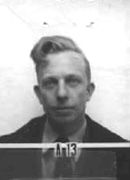
There seems to be little doubt that the wartime experience of scientists at Los Alamos made lasting impressions on many. These impressions must have had many contributing factors to which each individual would assign different weights. To me the most important was the intense commonality of professional and social life. [...]
It is, of course, obvious that the work of the Manhattan Project laid the foundation for the nuclear technology of reactors and of weapons; but what did it do for nuclear science in the restricted sense of understanding more about nuclei and nuclear processes? As I reflect on what I saw at Chicago and at Los Alamos, I conclude that there were really no outstanding major developments. This is not surprising, since quite practical problems occupied most exclusively the attention of experimenters and theorists. A wealth of data on neutron cross-sections of many fissionable and nonfissionable elements was obtained. Details of the fission process were learned though most of the surprises therein came much later. A few charged particle reactions, especially those which yielded neutrons or were of special interest for the fusion process, were rather well investigated. The creation of new species of nuclei among fission products and transuranics certainly added to knowledge of nuclear systematics. However, I think the main effect on nuclear science was the stimulation of interest, the development of techniques and equipment, the increase of knowledge and skills of many individuals who, with a legacy of camaraderie fostering a continuing and easy exchange of information, went their separate ways at the close of the war.
Val L. Fitch
None of us would claim that the Special Engineer Detachment played any pivotal role or made the project a success or failure. ... Clearly we were not the low men on the totem pole. As carved by our commanding general, we were not on the totem at all.
What I will claim is that a number of young men like myself, very early in their lives and careers, were exposed to superb physicists who were remarkable people in many respects, and it had a profound influence upon us.
J. Robert Oppenheimer
On the evening of November 2, Oppenheimer, the Los Alamos Laboratory director who directed weapons development for the Manhattan Project, spoke to the members of the Association of Los Alamos Scientists. Some 500 people packed the largest movie theater on "The Hill" to hear him. Years later, when former ALAS members were asked about postwar political activity, the answer invariably began (and sometimes ended) with ''I remember Oppie' s speech..." (Alice Kimball Smith)
There is nothing in atomic weapons—there is certainly nothing that we have done here or in the physics or chemistry that immediately preceded our work here—in which any revolutionary ideas were involved. I don't think that the conceptions of nuclear fission have strained any man's attempts to understand them, and I don't feel that any of us have really learned in a deep sense very much from following this up. It is in a quite different way. It is not an idea—it is a development and a reality—but it has in common with the early days of physical science the fact that the very existence of science is threatened, and its value is threatened. […]
I think that we have no hope at all if we yield in our belief in the value of science, in the good that it can be to the world to know about reality, about nature, to attain a gradually greater and greater control of nature, to learn, to teach, to understand. I think that if we lose our faith in this we stop being scientists, we sell out our heritage, we lose what we have most of value for this time of crisis.
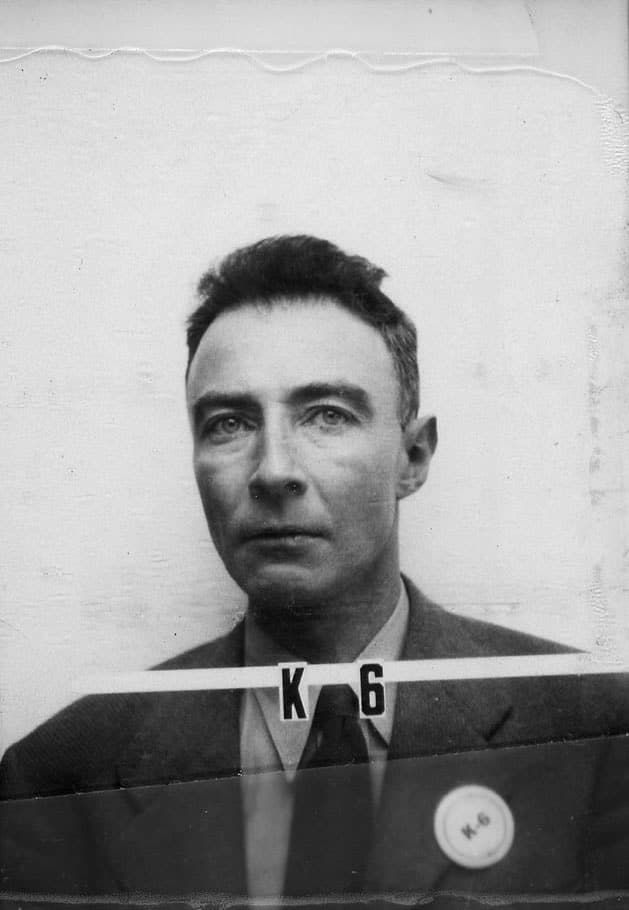
R. R. Wilson
The desert scenery one sees in going from Albuquerque to Santa Fe changes; a few miles to the north of Santa Fe, the view opens up and becomes breathtakingly spectacular. To the east are the great peaks of the Sangre de Cristo mountains usually snow covered, to the north one can see almost to Taos; one can look to the northwest up the valley of the Rio Grande to those beautifully colored hills where the Chama River winds down from Abique to join the Rio Grande at Espanola. Then to the west are the Jemez mountains, lower and more rolling than the Sangre de Cristo, forested but dramatically sliced into mesas by the canyons that cut through the Pajarito Plateau that lies just under the Jemez peaks. All this richness, this utter beauty, unfolds as one drives from Santa Fe, up the Rio Grande Valley, past the pueblos, and across the river. Then one makes that dramatic ascent, breathtaking mesa after mesa, finally reaching Los Alamos, itself perched on the very top of a huge mesa. I never tired of that view.
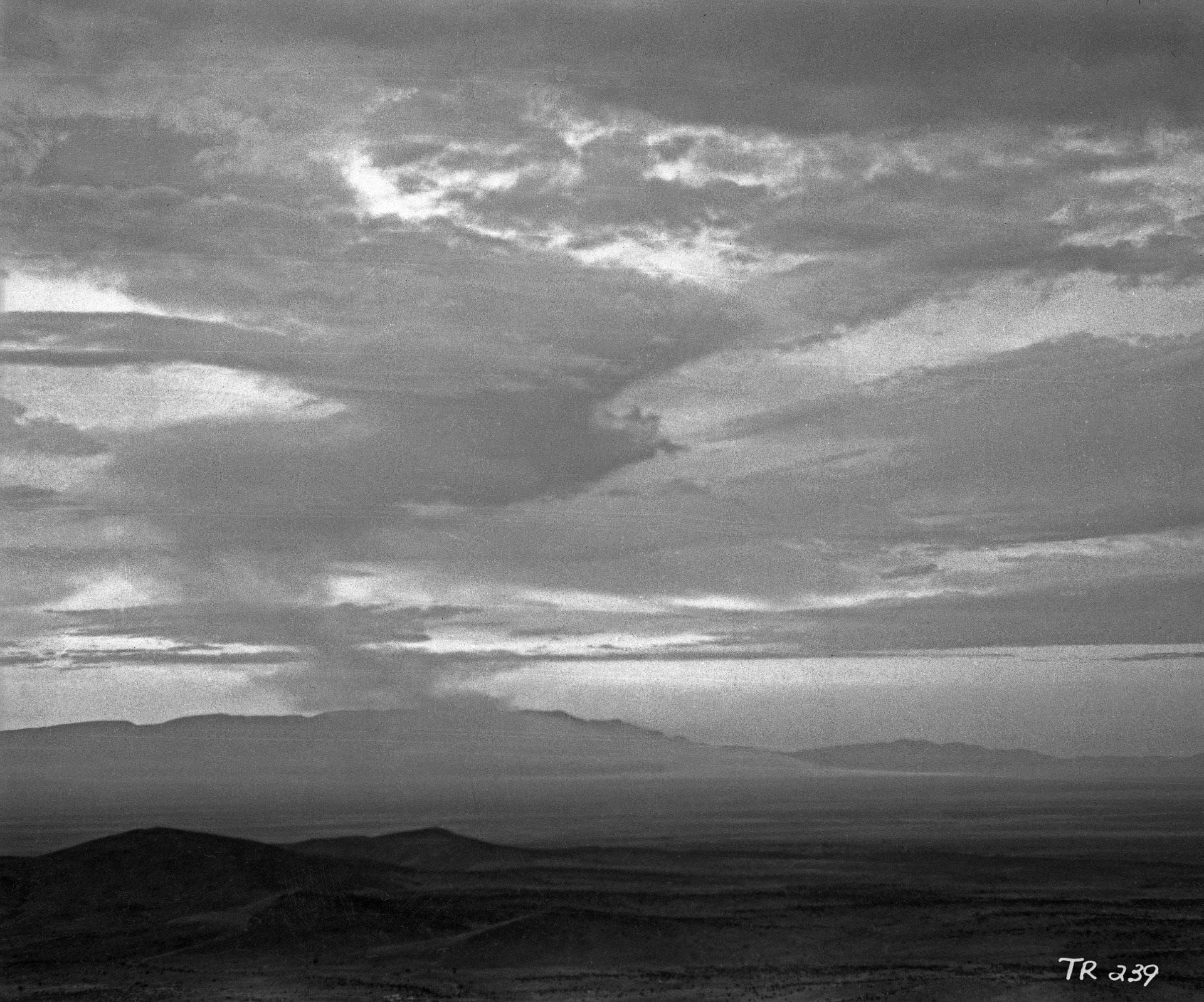
Sources
All selections from the Bulletin of the Atomic Scientists
Lt. Gen. Leslie R. Groves
Some Recollections of July 16, 1945
June 1970
Kenneth T. Bainbridge
Prelude to Trinity
April 1975
A foul and awesome display
May 1975
Emilio Segrè
Enrico Fermi: Physicist
November 1970
Laura Fermi
Bombs or Reactors?
June 1970
Nella Fermi Weiner
Fermi? He didn't even tell his wife
July 1994
Herbert L. Anderson
Fermi, Szilard and Trinity
October 1974
J. H. Manley
Assembling the Wartime Labs
May 1974
Otto R. Frisch
‘Somebody Turned the Sun on with a Switch’
April 1974
R. R. Wilson
The Conscience of a Physicist
June 1970
David H. Frisch
Scientists and the Decision to Bomb Japan
June 1970
George B. Kistiakowsky
Trinity—a reminiscence
June 1980
Val L. Fitch
The View From the Bottom
February 1975
Boyce McDaniel
A Physicist at Los Alamos
December 1974
E. Creutz
Nuclear Power: Rise of an Industry
June 1970
Alice Kimball Smith
Robert Oppenheimer: the Los Alamos years
June 1980
Photos via:
US Department of Energy
US Department of Defense
Los Alamos National Laboratory
trinityremembered.com
atomicheritage.org
nuclearsecrecy.com (Alex Wellerstein)
Keywords: Enrico Fermi, J. Robert Oppenheimer, Manhattan Project, Trinity test, World War II
Topics: Nuclear Weapons
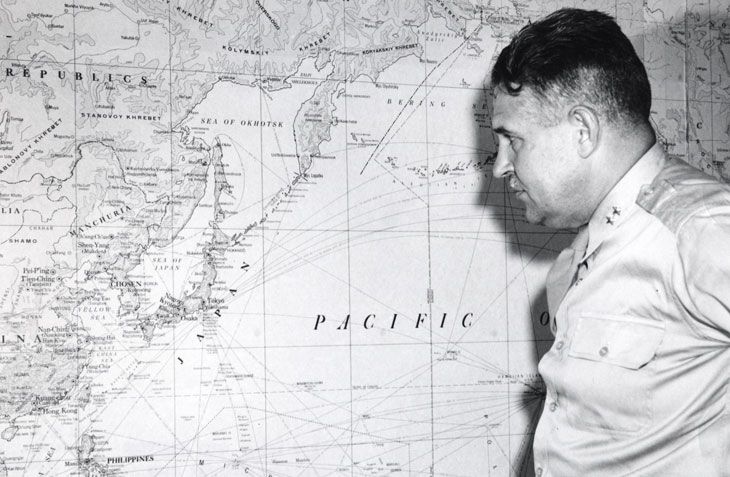
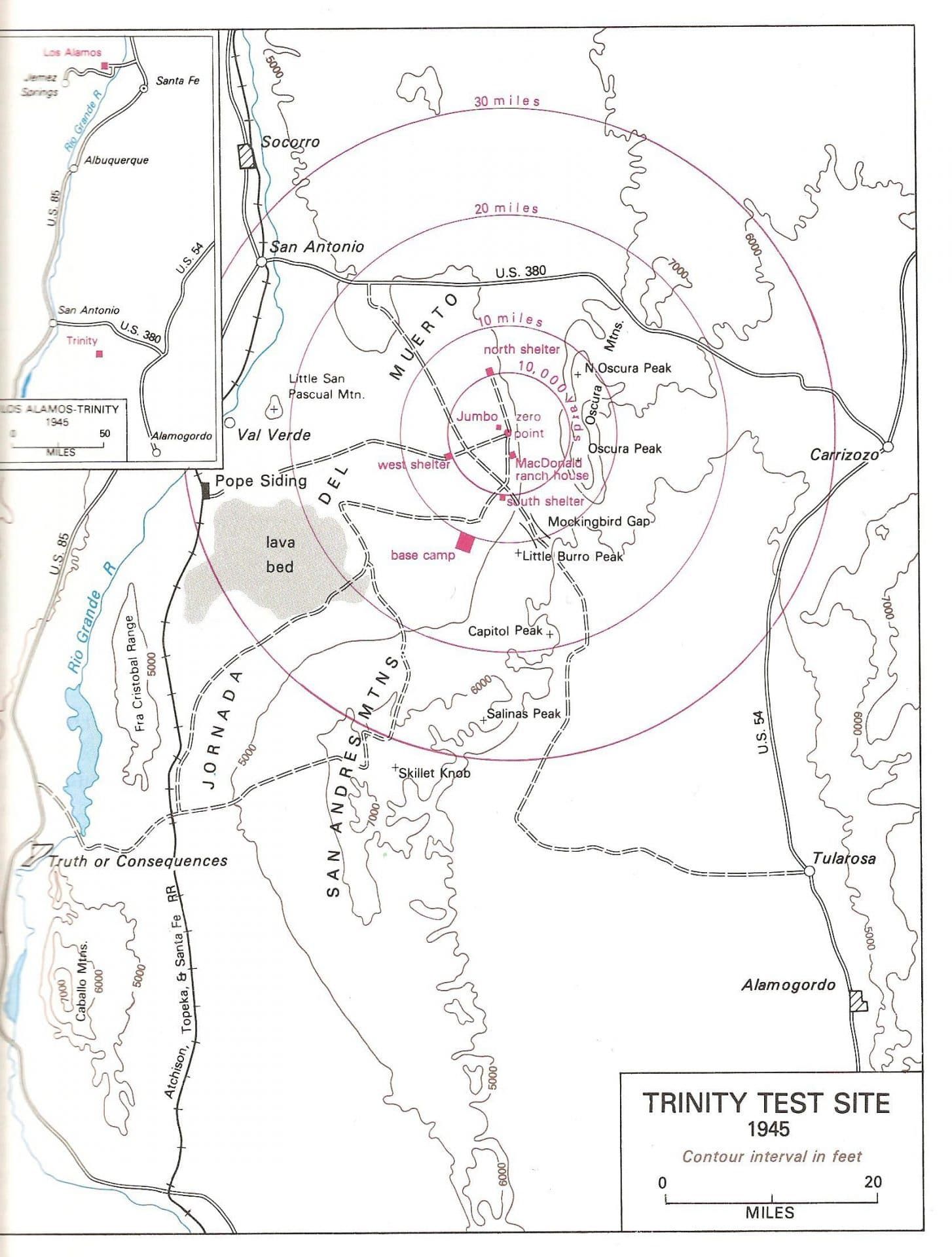
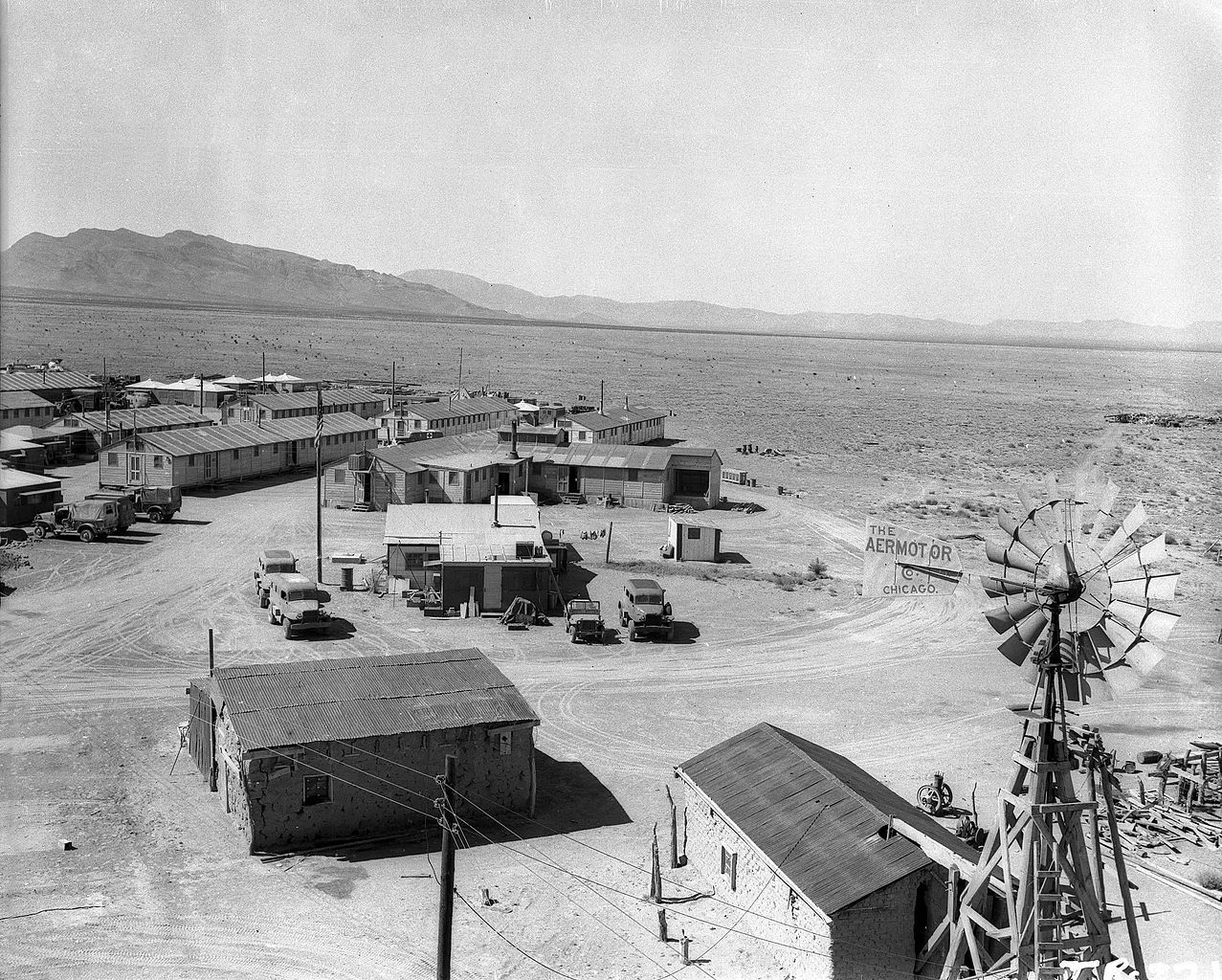
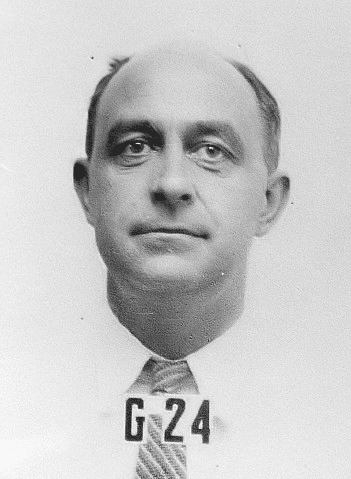
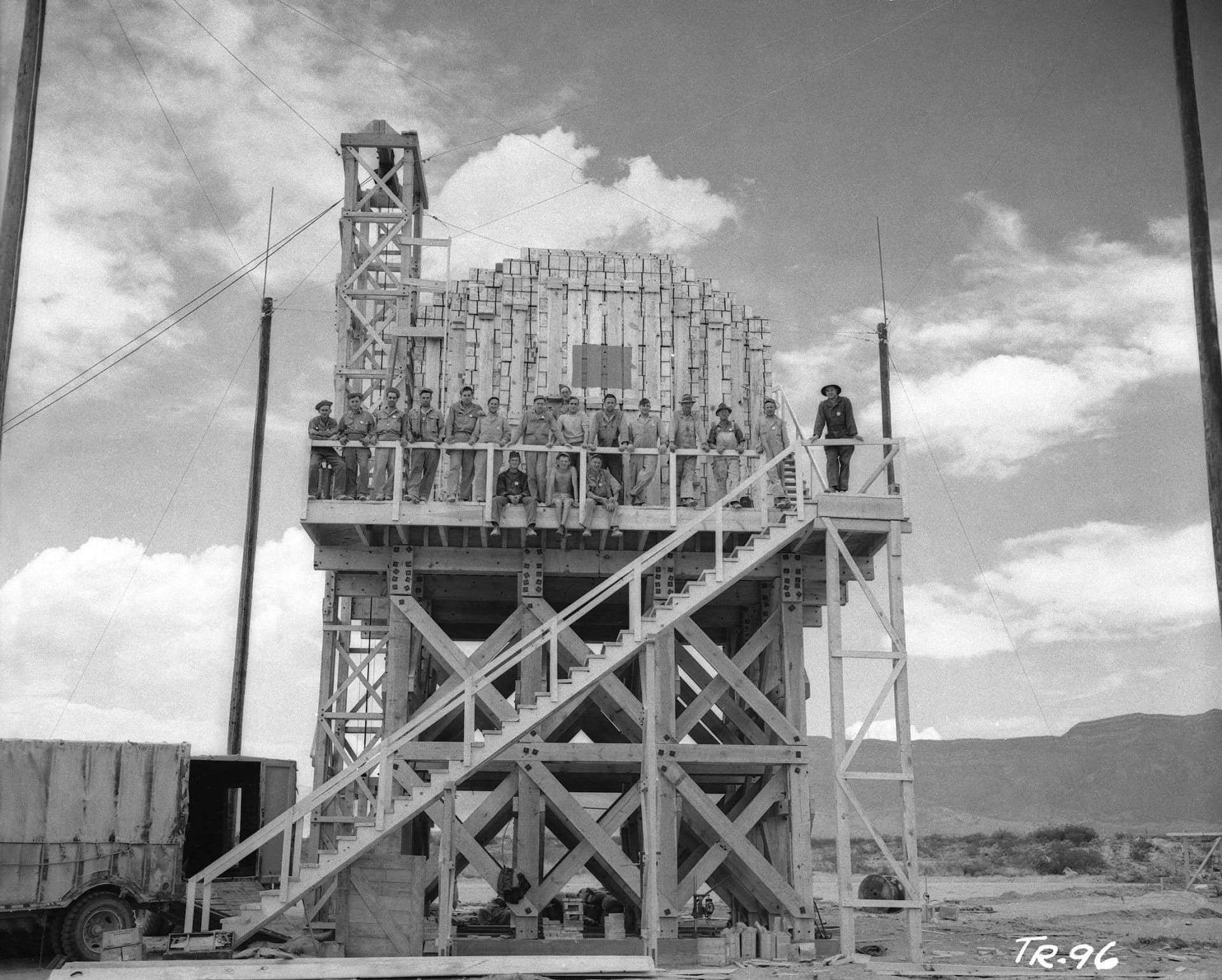
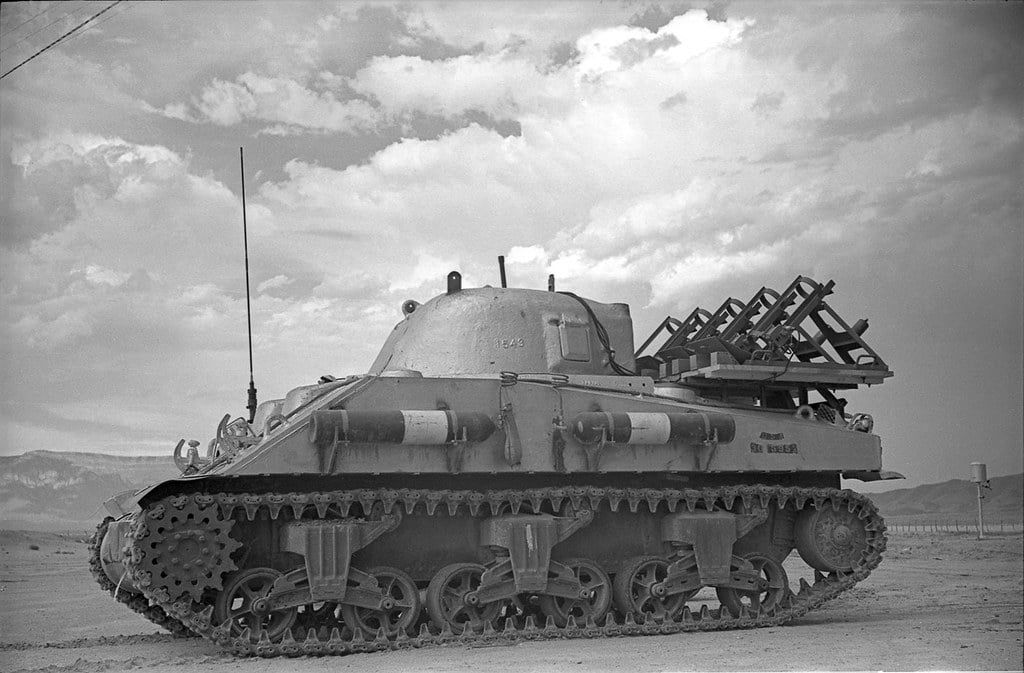

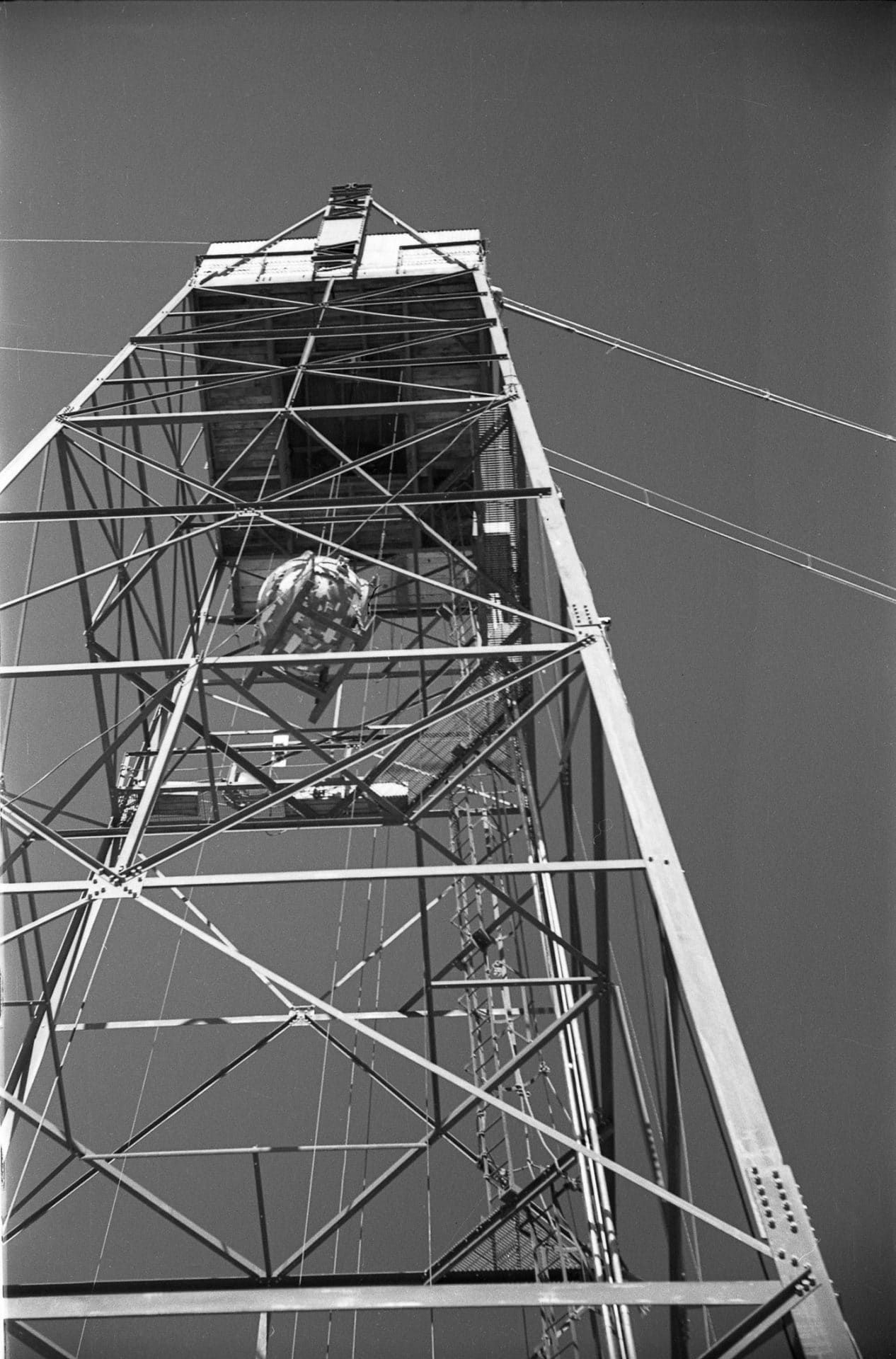

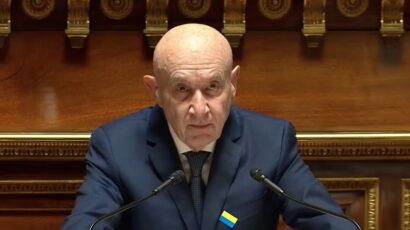







Very nice presentation. If anyone is interested there is an interesting website that has recordings of interviews with some of people who worked on the Manhatten project. I included the link below. The link is from Val Fitch’s interview but there are lots more on the same website.
https://www.manhattanprojectvoices.org/oral-histories/val-fitchs-interview
Great presentation! The tragedy of the era of nuclear “deterrence”. Nuclear arms complicate conventional war, putting ultimate destruction into the mix, making untying the knot of war on a global scale that much harder.
These same scientists, while creating the bomb, at first calculated that the temperatures of the bomb may ‘ignite’ the Earth’s atmosphere, that a bomb detonation wold take away the atmosphere of the Earth. It did not stop them. Death dealing on a global scale is a grim business. Notable that all involved don’t reveal personal culpability.
This article from the NYT paints a very different picture. It says Trinity was a very dirty bomb that contaminated a wide area.
https://www.nytimes.com/2020/07/15/opinion/75-anniversary-trinity-nuclear-testing.html?fbclid=IwAR0KlNqYnWMm4ttJL3UHt2cG7t3qCzKWSslC21CnzUKfGInOUDpnjakXcSM
Thank you! I do wish there were a quote from Leo Szilard whose name I think I’m misspelling.
He visited us on the Great Peace March in 1986. When I accidentally ran into him as he sat on a little hill, and chatted for a while, he seemed to be in grief.